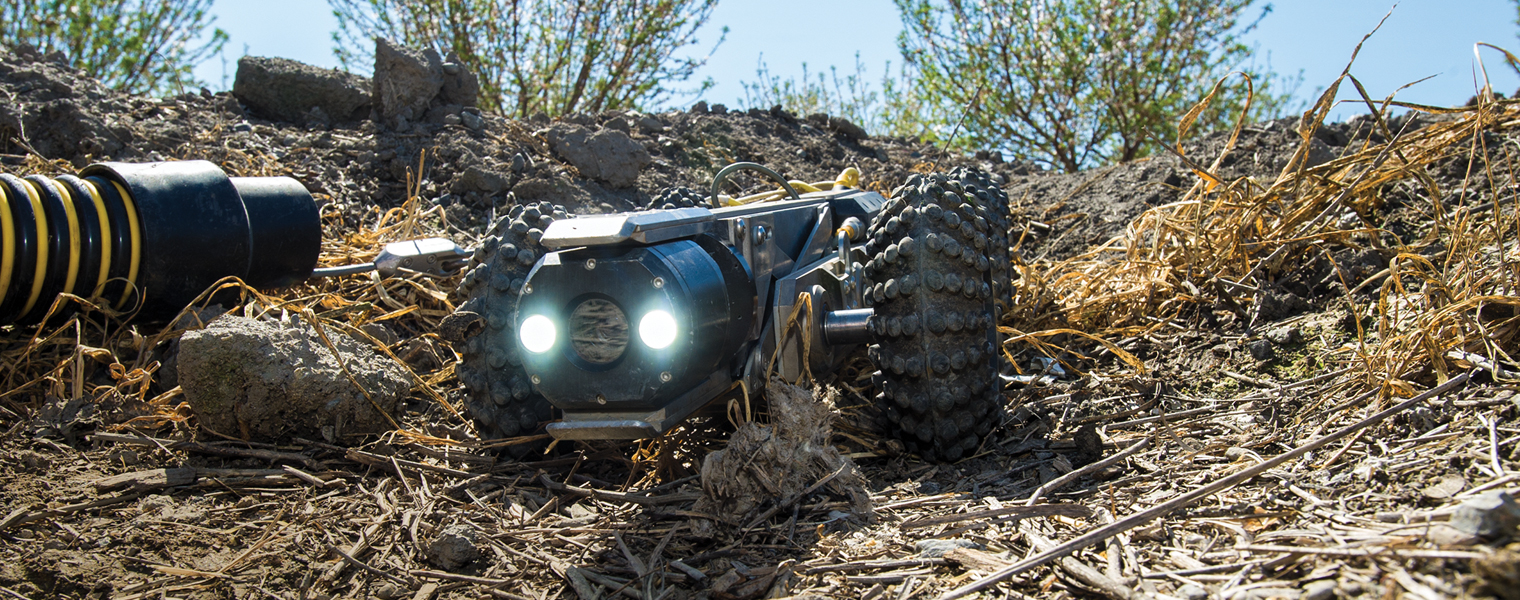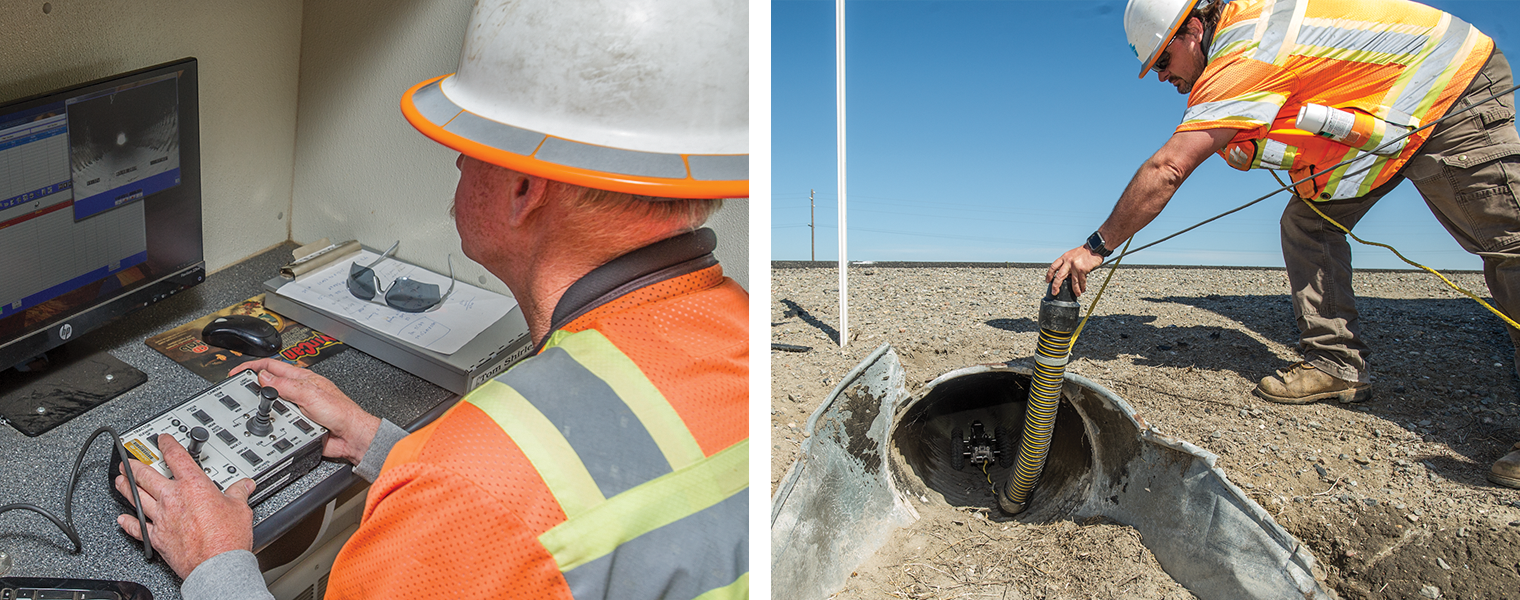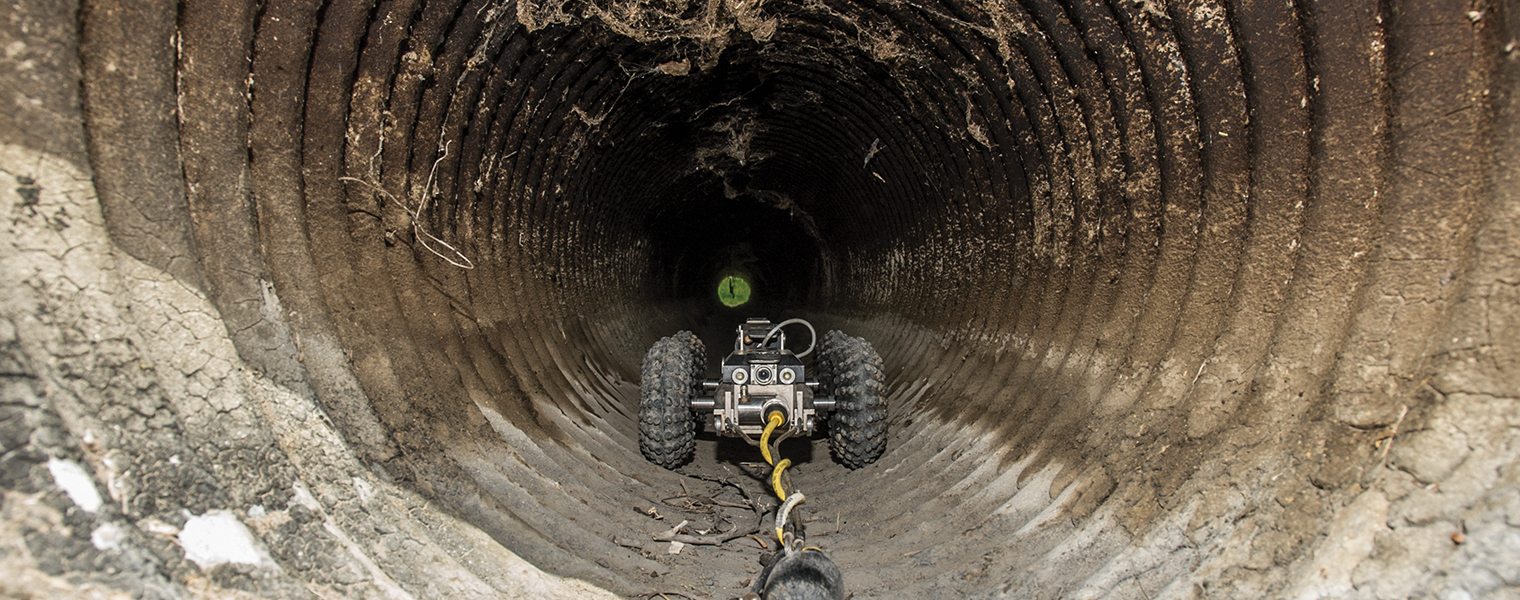Shining a Light on Culvert Conditions
Caltrans Steps Up Inspections of Unheralded but Key Part of Highway System

Culverts are an unsung hero of the state transportation system. Often out of sight and attracting little attention, culverts channel streams and stormwater under roadways and protect them from the destructive forces of flooding and erosion — supporting the safety of the traveling public above.
Caltrans has been steadily inspecting culverts in the State Highway System, many of them more than a half-century old, and anticipates completing the first round of statewide inspections within the next four years. The Road Repair and Accountability Act of 2017 (Senate Bill 1) mandates that 90 percent of Caltrans culverts be in good or fair condition by 2027.
The Caltrans Independent Office of Audits and Investigations also emphasized the importance of completing the culvert inspection program, and conducting re-inspections, in its April 2018 audit report on SB 1 performance outcomes.
All 12 Caltrans regional districts completed the inventory of culverts in their regions by end of 2018. Culvert inspections are planned and conducted at the Caltrans district level.
Altogether, there have been 212,181 culverts counted as part of the State Highway System, and 145,391 inspections conducted up through the 2018-19 fiscal year, which ended June 30. Of those culverts inspected, 66.3 percent (96,443 culverts) were in good condition and required no repairs, and 22.6 percent (32,793) needed only corrective maintenance or minor repairs and were rated “fair.” Another 11.1 percent (16,155) fell into the “poor” category, requiring major rehabilitation or replacement.

In the past fiscal year, Caltrans crews inspected 15,533 culverts and found that 75.4 percent (11,704), were in good condition, 13.4 percent (2,087) fair, and 11.2 percent (1,742) were in poor shape.
The good-fair-poor ratio of culverts is expected to remain approximately the same as the remaining inventory is assessed. However, the number and percentage of culverts deemed as good or fair is expected to increase with repairs funded by SB 1 and other revenue sources.
Caltrans’ Division of Maintenance, which oversees the culvert program, also has put in place a performance plan to complete statewide inspections by 2023 in line with the audit recommendations. In addition, 145 more positions were created to augment the existing culvert inspection crews statewide, expected to expedite the inspection process and perform cleanings/repairs to comply with the 2023 completion target.
The work is being tracked on a monthly basis to gauge progress toward SB 1 goals.
To meet the SB 1 performance goal, Caltrans estimates it will spend about $412 million annually over the next decade to ensure that 90 percent of the system’s culverts are in good or fair condition. SB 1 will be the main funding source for drainage asset needs.
Inspectors rate the culverts as being either good, fair or poor through a 100-point system. Alignment, joints, materials, shape and capacity are assessed. When inspections reveal compromised functionality, solutions range from simply unclogging the culvert to making costly repairs or replacement.
Failed culverts can present hazards for motorists, cause traffic delays, require costly repairs and interrupt the transportation system. Culvert failures also can damage the surrounding environment. Debris and sediment from a culvert failure can clog streams and creeks and impede migrating fish.
Culverts fail over time for various reasons, including usage, age and environmental conditions. Some common causes for culvert failures are clogs, pipe damage, road washouts, rusted or failed culvert bottoms, cracked concrete, exposed or corroded reinforcing steel, joint separation and backfill infiltration.
See culvert inspectors in action in Caltrans News Flash No. 44.

Source: Office of Stormwater and Environmental Compliance, Caltrans Division of Maintenance

